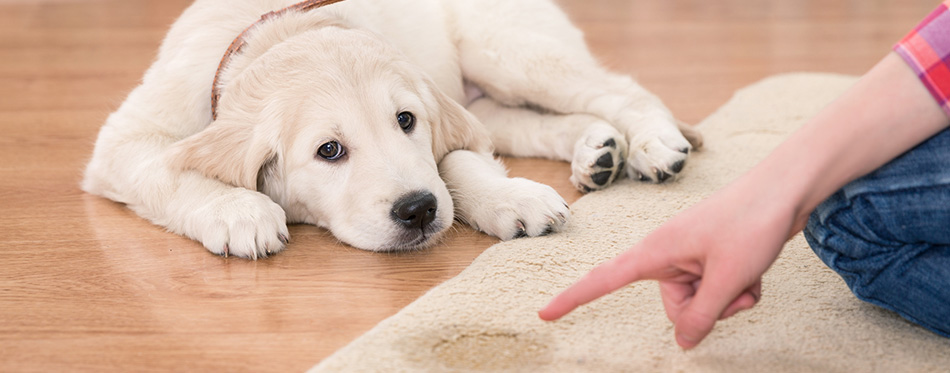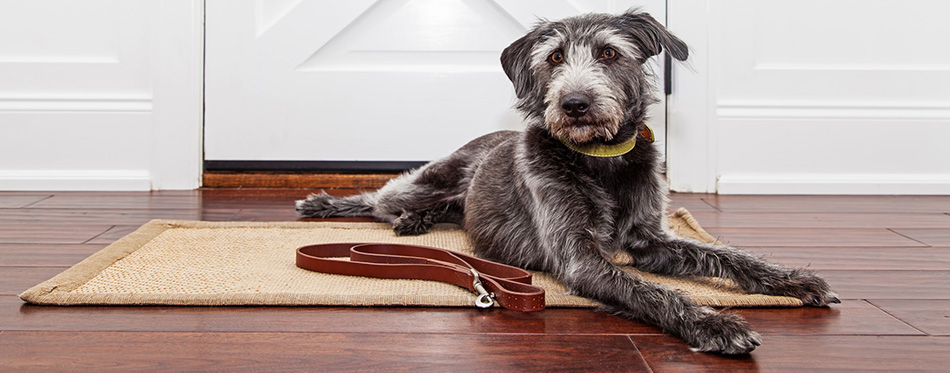Keeping a clean house is essential for the health of both you and your pet. Aside from keeping it healthy, you can design your interior to make it more stylish and inviting. Depending on your preference, there are different materials to decorate with, to make your space more homely and comfortable. One way to decorate your living area is by using wood floors, which come in different colors, styles, and designs. The floor surface covering material is versatile and durable but, unfortunately, is not immune to stains. The material is already prone to wear and tear, but when you have a pet, there is a more likelihood of your flooring getting stained. It does not matter how trained your pup is; one day, they might forget their training and dirty your floor.
One main pet issue that leads to stained wood floors is urine. Not only does urine make the floor look dirty, but the stench it leaves is also enough to put you off. There is a way to protect your wood floors from the damaging effects of dog urine. However, you can salvage what is left of it if your dog goes ahead of you. This article will show you how and what to do when your dog goes about its business all over your stylish wood floors.

Protect the Wood Floor from Your Dog’s Urine
- Use Hardwood Floor Sealants
Wood is a porous material, and so the liquid will penetrate it easily. The quality of the wood reduces anytime your dog urinates on it due to the urine weakening the wood fibers. Moisture also increases the chance of mold growing on the wood, which contributes to degrading the material. One thing that worsens the situation is when there are scratches on it. Scratches break the surface and make it easier for moisture to seep into deeper levels of the wood. The role of floor sealants is to form a barrier between your dog’s paws and the wood floor so that it is not damaged. It acts as a thick barrier that is more resistant to scratches and moisture, protecting your wood from urine damage.
The substance which is also known as floor finish has a chemical composition and comes in different types for different uses. The types include initial use, regular use, and restorative sealers. Initial use sealer is the first polish given to the wooden floor immediately after it is installed. The regular use sealer serves as reinforcement for the floor and is applied regularly to keep the wood looking fresh. Restorative sealers are used when the previously used sealers have begun wearing off to give the wood a rejuvenated look.
- Try Penetrating Oil
The downside to using floor sealants is the plastic look that it gives the floor, somewhat taking away from the wood appearance. Penetrating oil does not leave the layers, and you will still get the elegance of having wood floors. Penetrating oils seep into the layers of the wood to substantially fill in any spaces so that the fibers of the wood are strengthened. As expected, this provides the floor with a lot more realistic wooden tone and makes it better equip it to handle your dog’s urine. Because these oils become part of the wood, serving as hardening agents, they make the floor more durable and long-lasting. With penetrating oil, you will rarely need to reapply, and maintenance is easy since you can concentrate on only the specific part of the wood that has been soiled.
- Additional Pet-friendly Materials Might Help
Keeping a pet in your home will mean making provisions so that they do not ruin your space. Just like you would do for children, you should put materials around your house that can accommodate pets. For wood floors, incorporate pet-friendly elements to double up protection. Dogs tend to be repetitive and so they will find a spot and keep going back to it. When you identify an area in your house where your dog likes to do its business, that’s where you need to focus your intervention. In this case, you can get area rugs or pet-friendly mats. Make sure that these flooring materials are also wood-friendly and easy to clean. Since wood tends to soak up moisture fast, getting a rug that retains moisture might not be such a good idea. This is because the urine in the carpet decomposes as it sits and becomes corrosive when in contact with the wood. A rug that can be carefully split up into sections will be an advantage since it will allow you to deal with only the soiled areas. Find out more about pet friendly rugs here.
- Long Nails Need To Go
Long nails are enemies to wood floors because the scratches inflicted on them only worsen things. As mentioned, wood floors are porous and so scratches only make it easier for moisture to get in. Most dogs are active and don’t like to sit still. They like to play around and so keeping their nails long will mean quicker damage to your wood floors. When your dog urinates on the floor, these scratches become faster avenues for the liquid to become deeply absorbed into the various layers contained within the wood. Once the liquid gets that deep into the floor, it is hard to get rid of, and the odor it presents can be unbearable. Cutting your pooch’s nails is pretty essential not only to preserve your wood floors but also to keep the dog healthy. All that scratching can cause some pain for the dog, especially if the nails break along the way. Any residue left under the fingernails can also be a source of significant discomfort for the pet. For more options, check out our detailed review of dog nail clippers.
- Do Not Take Your Eye Off Your Dog!
This is probably one of the most important things to do if you have a pet. You should always have a close eye on the dog to monitor its activities. This gives you the upper hand in preventing pee accidents or even responding on time. Some visible signs to look out for are sniffing, raising of one hind leg, and walking in circles. Also, you should give your dog frequent potty breaks to reduce the chance of it peeing on the floors. You might need to train your pooch some more to be able to tell when it needs to go. Never underestimate the power of rewarding your furry friend for exhibiting positive behaviors: it will help in curbing the negative one. Supervision is essential but can be difficult and so if you need extra help, find some. Every member of the house should take turns in keeping an eye on the furry companion. If you live alone you can hire a dog walker, nanny or trainer to make it easier for you. Check out our guides on pee pads for dogs and dog poop bags for more info.

Salvage the Situation
If you are late in protecting your wood floors and you find that your dog has urinated all over it, you have to act fast. The most basic thing you can do is to try to soak up as much of it as possible using a paper towel or cloth. For extra cleanliness, you can use enzyme-based floor cleaner diluted in water to mop up the substance. The enzymes in the cleaner break up proteins in the urine so that it is easier to get it off the wood floor. In the absence of enzymatic floor cleaner, you can mix dishwashing detergent with baking soda, apply the mixture to the affected area and scrub. You will get practically the same results. To get rid of the odor, pour some vinegar over the affected area, and leave it for 24 hours. The vinegar should pull any odor out from deep within the wood. The vinegar itself might produce a smell, but that should be gone in about 24 hours as well. To prevent permanent stain or discoloration, a hydrogen peroxide-soaked towel over the area will do the job. If you’re unsure whether your floors can take hydrogen peroxide or any other chemical, it’s a good idea to hire a professional to help you keep your floors clean. Take a look at our reviews of pet odor neutralizers and pet stain removers for more options.
To Summarize
When you have a pet, it’s pretty much guaranteed that at some point you will encounter their pee on your floor. Dogs and hardwood floors are not a good match, so you need to give your floors a fighting chance against the effects of your pet’s activities. Aside from floods, urine is the next worst thing wood floors could come into contact with. However, urine damage to hardwood floors can be prevented. Prevention should be your first choice because it will save you time and money as compared to dealing with the situation. The preventive measures, which include sealing, surveillance, and the use of penetrating oils, are tried and tested methods which have yielded positive results, so definitely try at least some of them!

